An object is verically thrown upwards. The the dislacement-time graph for the motion is as shown in .
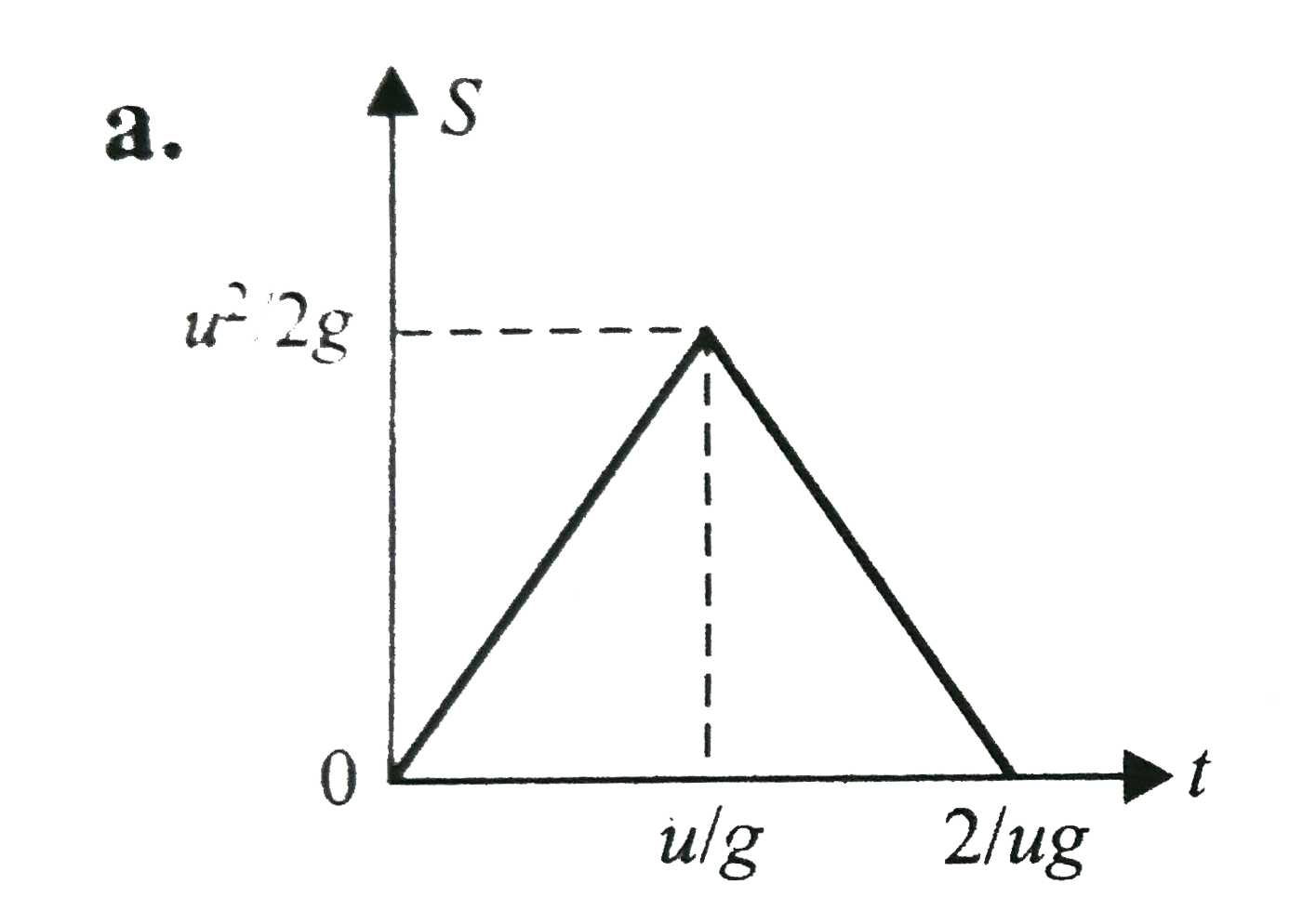 .
.
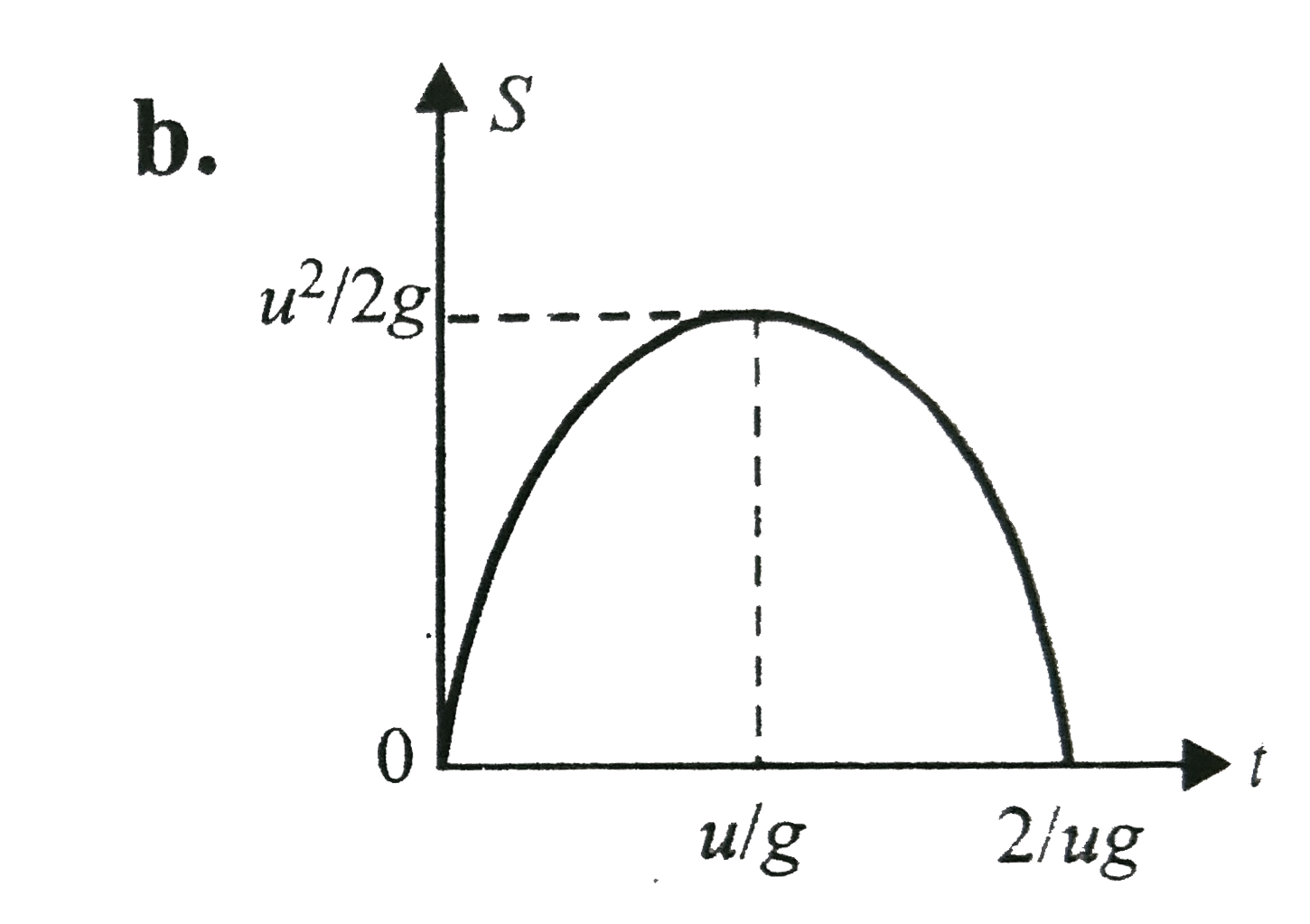 .
.
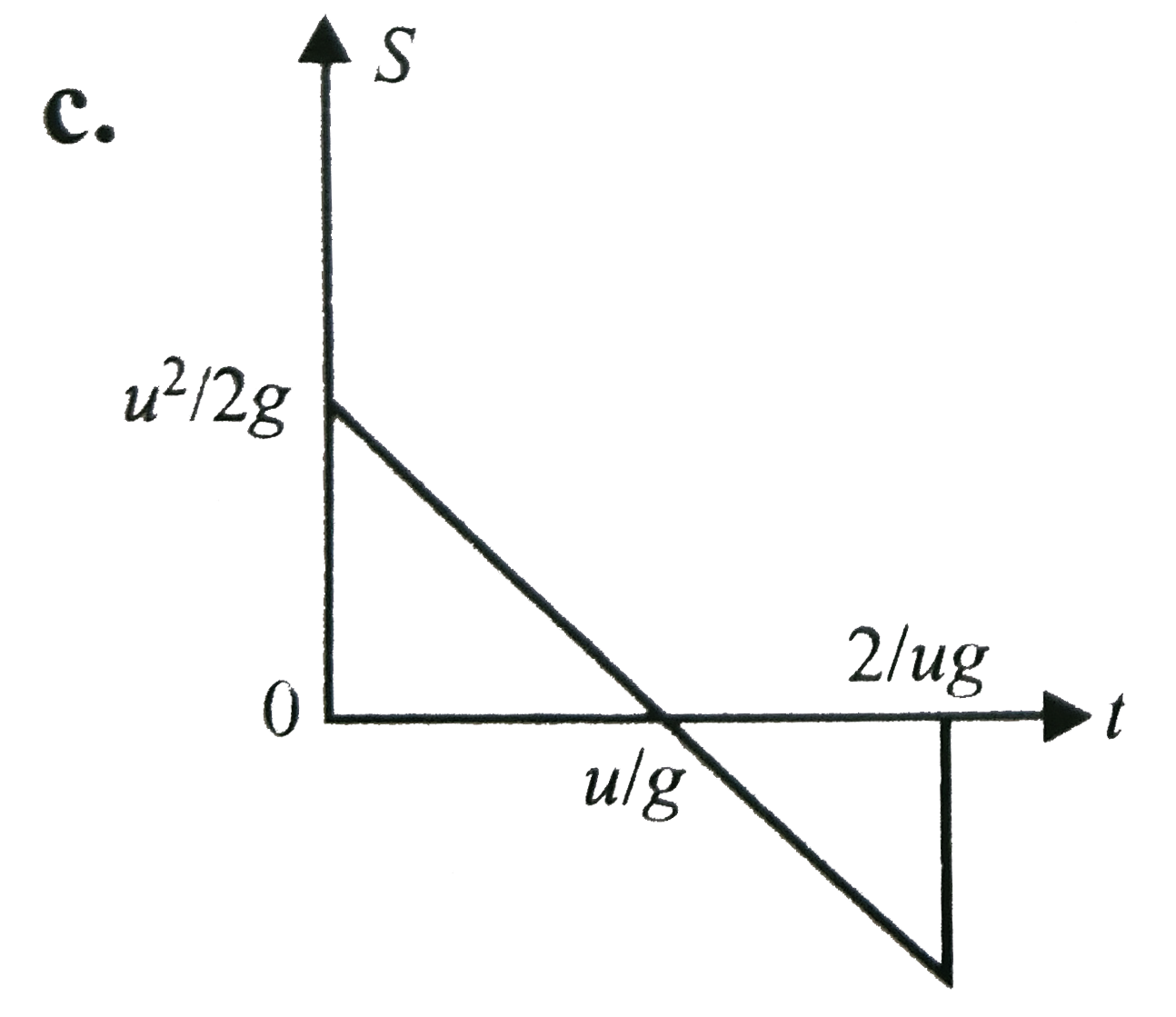 .
.
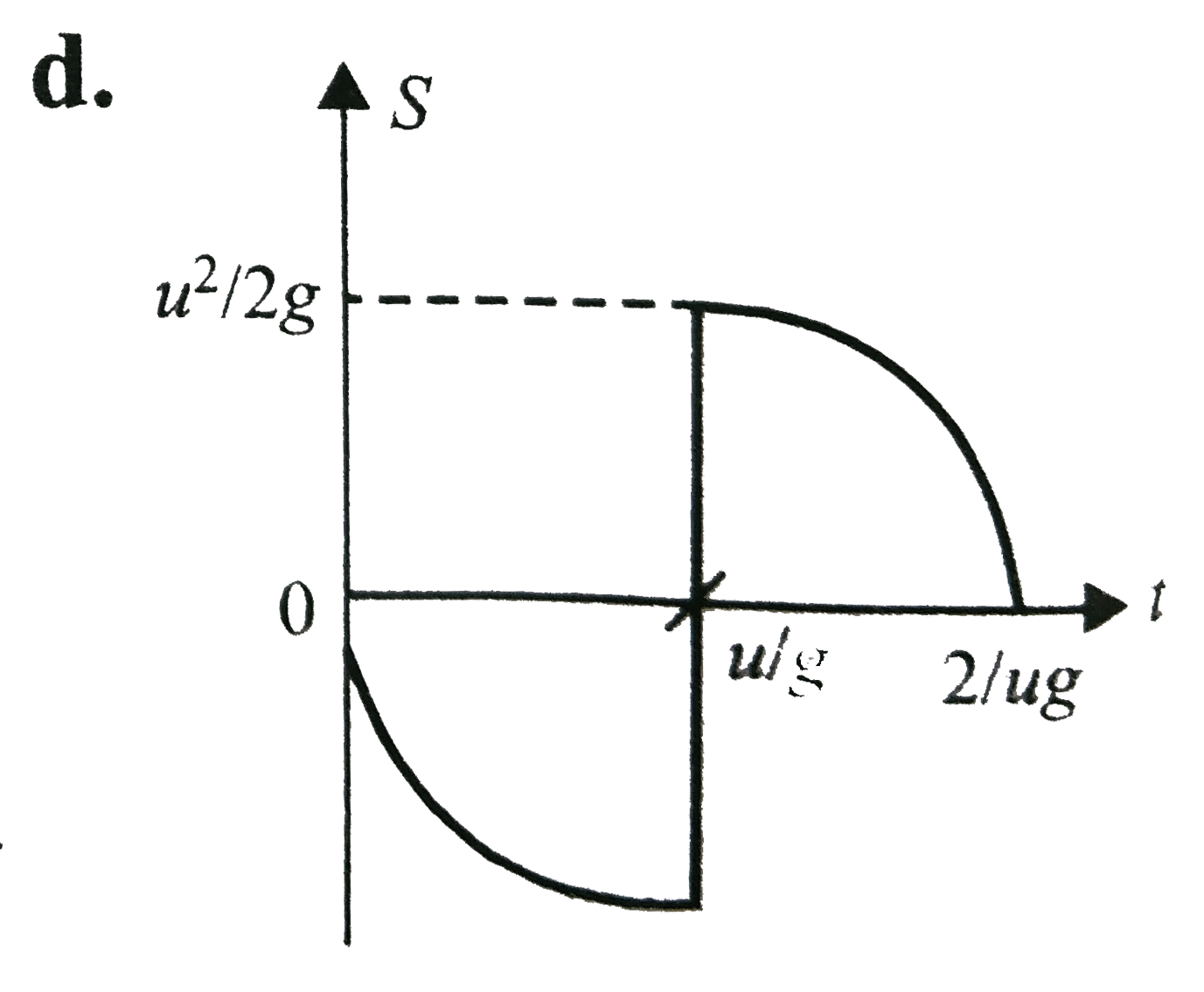 .
.
The correct Answer is:B
To solve the problem of determining the correct displacement-time graph for an object thrown vertically upwards, we can follow these steps:
Step 1: Understand the Motion
When an object is thrown vertically upwards, it moves against the force of gravity. Initially, it has a certain velocity (u) and as it rises, its velocity decreases until it reaches the highest point where the velocity becomes zero.
Step 2: Analyze the Displacement
The displacement of the object can be described by the equation:
s=ut−12gt2
where:
- s is the displacement,
- u is the initial velocity,
- g is the acceleration due to gravity (approximately 9.81m/s2),
- t is the time.
Step 3: Identify the Motion Phases
1. Going Up (O to A): The object moves upwards, and the displacement increases. The velocity decreases until it reaches zero at the highest point (A).
2. Coming Down (A to B): After reaching the highest point, the object starts to descend. The displacement decreases initially but then increases again as it falls back down.
Step 4: Graphical Representation
- During the upward motion (O to A), the displacement increases and the graph will be a curve that rises and flattens out as it approaches the peak (A).
- At the peak (A), the slope of the graph (which represents velocity) becomes zero.
- During the downward motion (A to B), the displacement decreases initially and then increases again as the object falls back down, resulting in a curve that rises again.
Step 5: Determine the Correct Option
From the analysis, the displacement-time graph will show:
- A curve that rises steeply at first (indicating increasing displacement as the object moves up).
- A flattening out at the peak (indicating the moment the object stops rising).
- A curve that descends and then rises again as the object falls back down.
Given the options, the correct displacement-time graph will be the one that matches this description, which is option B.
Final Answer
The correct option for the displacement-time graph of an object thrown vertically upwards is Option B.
---
When an object is thrown vertically upwards, it moves against the force of gravity. Initially, it has a certain velocity (u) and as it rises, its velocity decreases until it reaches the highest point where the velocity becomes zero.
The displacement of the object can be described by the equation:
s=ut−12gt2
where:
- s is the displacement,
- u is the initial velocity,
- g is the acceleration due to gravity (approximately 9.81m/s2),
- t is the time.
1. Going Up (O to A): The object moves upwards, and the displacement increases. The velocity decreases until it reaches zero at the highest point (A).
2. Coming Down (A to B): After reaching the highest point, the object starts to descend. The displacement decreases initially but then increases again as it falls back down.
- During the upward motion (O to A), the displacement increases and the graph will be a curve that rises and flattens out as it approaches the peak (A).
- At the peak (A), the slope of the graph (which represents velocity) becomes zero.
- During the downward motion (A to B), the displacement decreases initially and then increases again as the object falls back down, resulting in a curve that rises again.
From the analysis, the displacement-time graph will show:
- A curve that rises steeply at first (indicating increasing displacement as the object moves up).
- A flattening out at the peak (indicating the moment the object stops rising).
- A curve that descends and then rises again as the object falls back down.
The correct option for the displacement-time graph of an object thrown vertically upwards is Option B.
Topper's Solved these Questions
- KINEMATICS-1BOOK - CENGAGE PHYSICS ENGLISHCHAPTER - KINEMATICS-1EXERCISE - Graphical cancept
1 Videos
- KINEMATICS-1BOOK - CENGAGE PHYSICS ENGLISHCHAPTER - KINEMATICS-1EXERCISE - Multiple Correct
16 Videos
- KINEMATICS-1BOOK - CENGAGE PHYSICS ENGLISHCHAPTER - KINEMATICS-1EXERCISE - Single Correct
52 Videos
- GRAVITATIONBOOK - CENGAGE PHYSICS ENGLISHCHAPTER - GRAVITATIONEXERCISE - INTEGER_TYPE
1 Videos
- KINEMATICS-2BOOK - CENGAGE PHYSICS ENGLISHCHAPTER - KINEMATICS-2EXERCISE - Exercise Integer
9 Videos
Similar Questions
Knowledge Check
Position-time graph for motion with zero acceleration is
A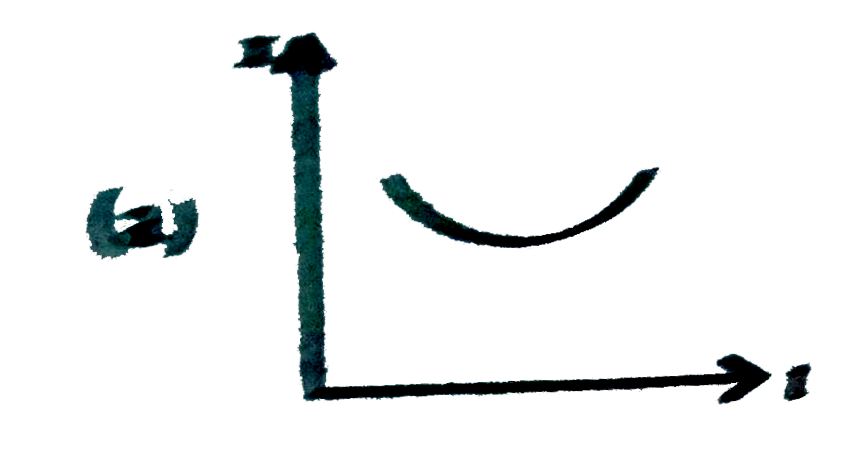 B
B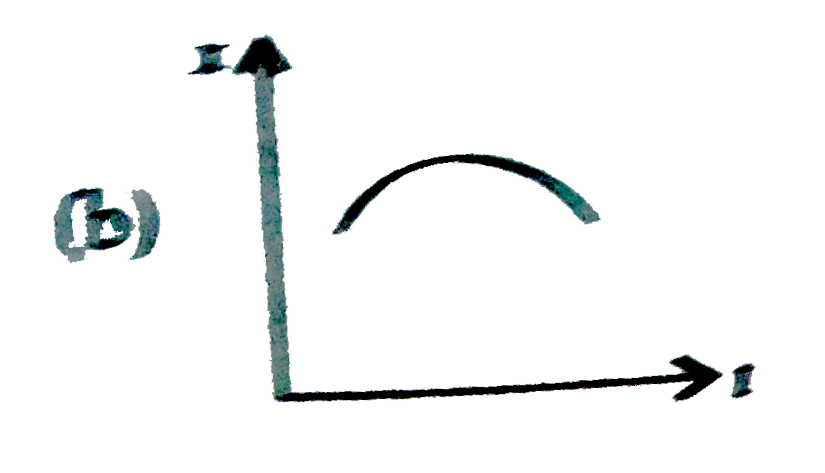 C
C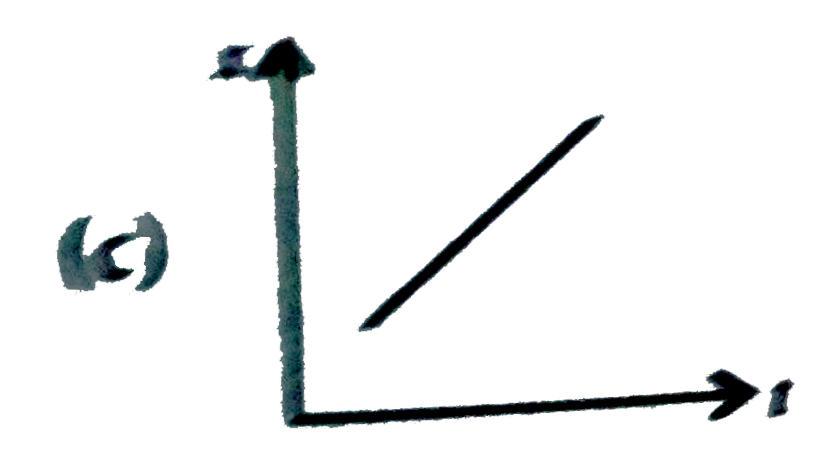 D
D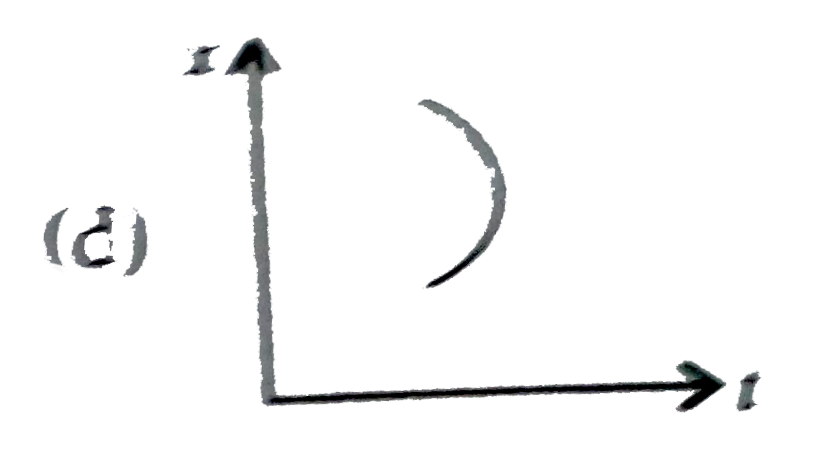
The velocity-time graph for a particle moving along X-axis is shown in the figure. The corresponding displacement-time graph is correctly shown by
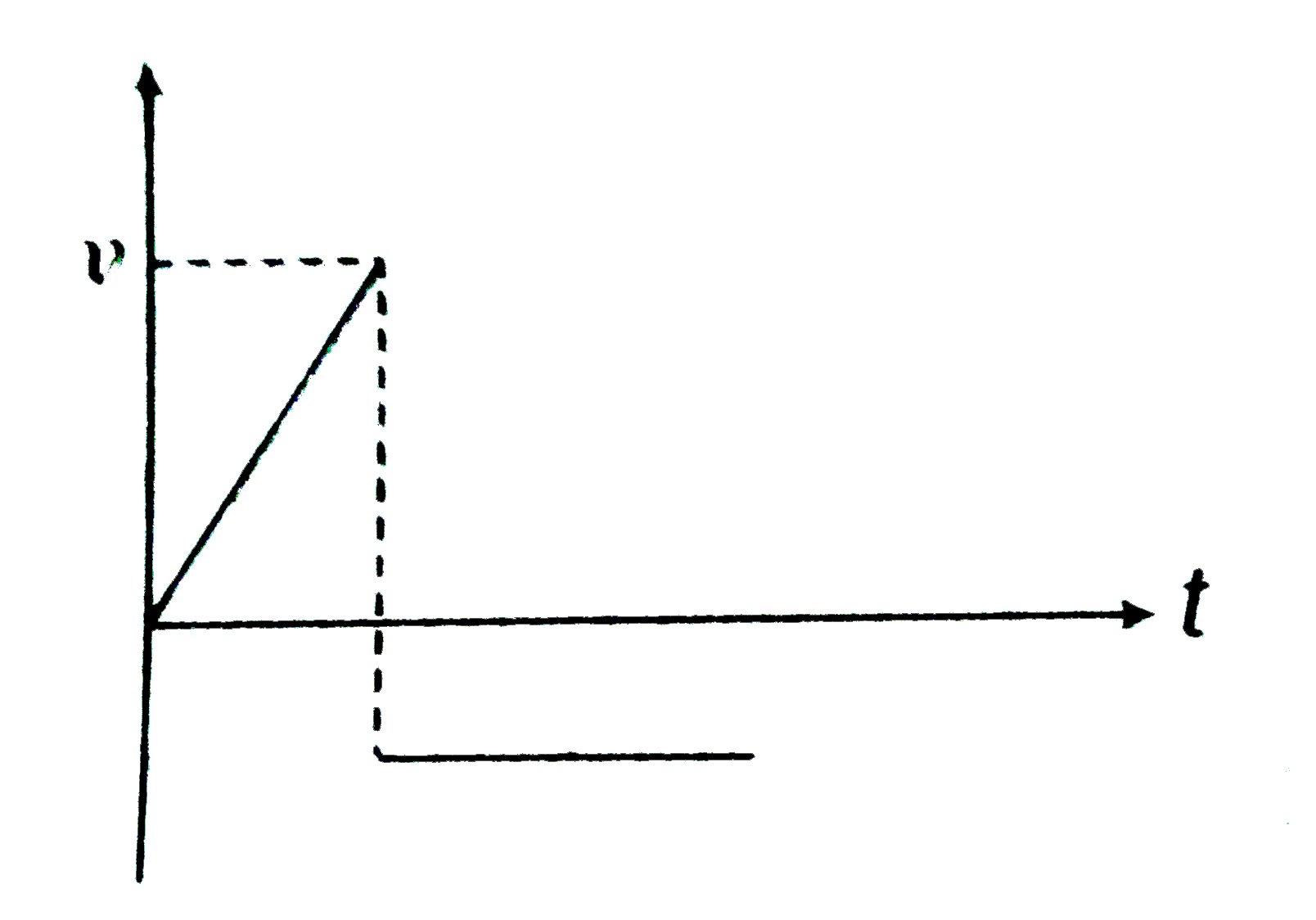
View SolutionDraw the position-time graph of a stationary object.
View SolutionPosition - time graph for motion with negative acceleration is
View SolutionThe displacement-time graph of a body is shown in.
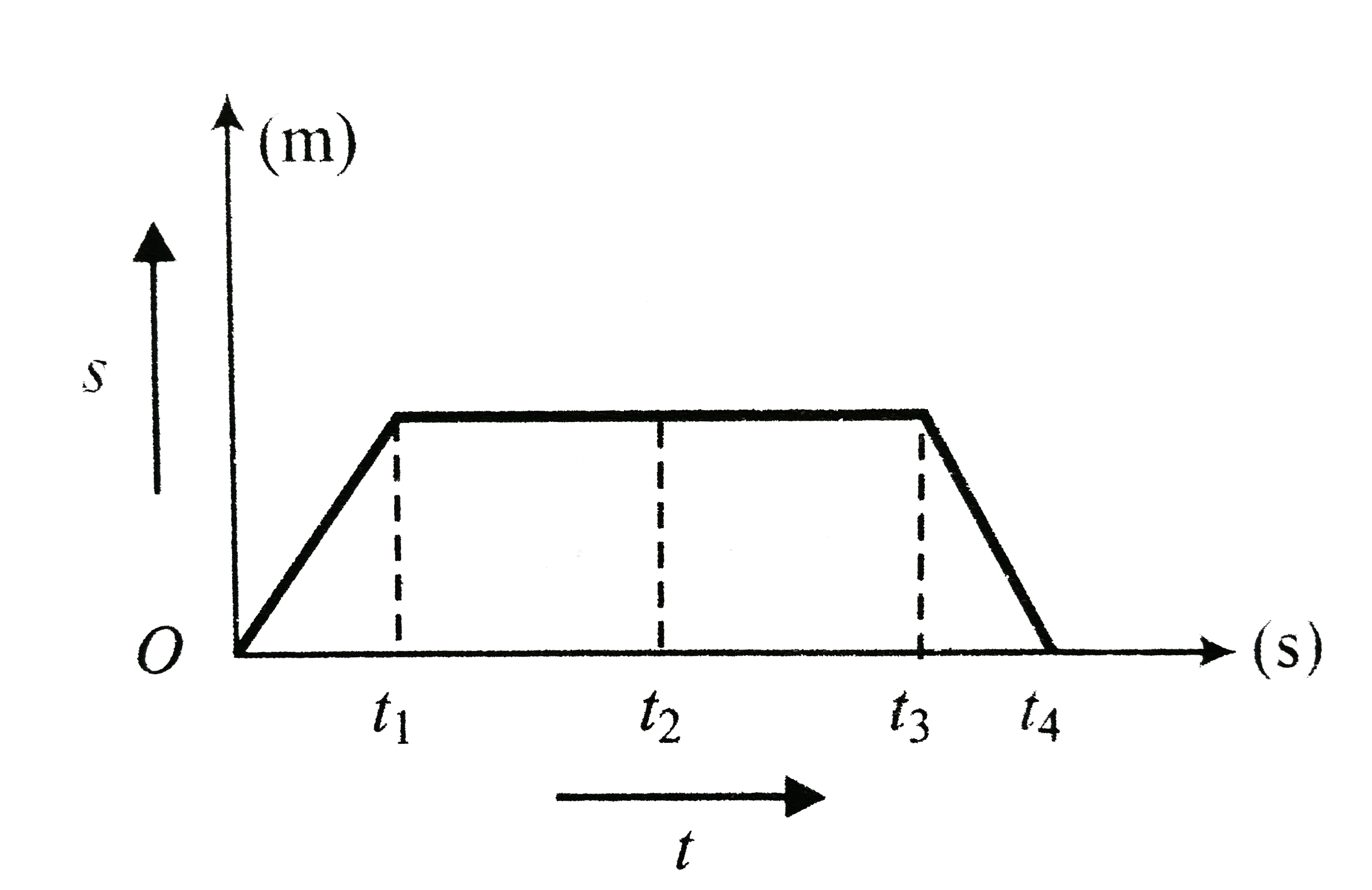 .
.
The velocity-time graph of the motion of the body will be .
View SolutionWhat is the nature of the distance-time graphs for uniform and non-uniform motion of an object ?
View SolutionA ball is thrown vertically upwards and its velocity v varies with time t as shown in the figure. Which of the graphs (1),(2),(3),(4) shows the correct vurve of displacement versus time ?
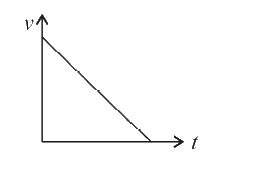
View SolutionThe velocity - time graph for linear motion of an object is as shown. Find
(a) The distance travelled and
(b) Displacement for the interval between 5 s and 40 s.
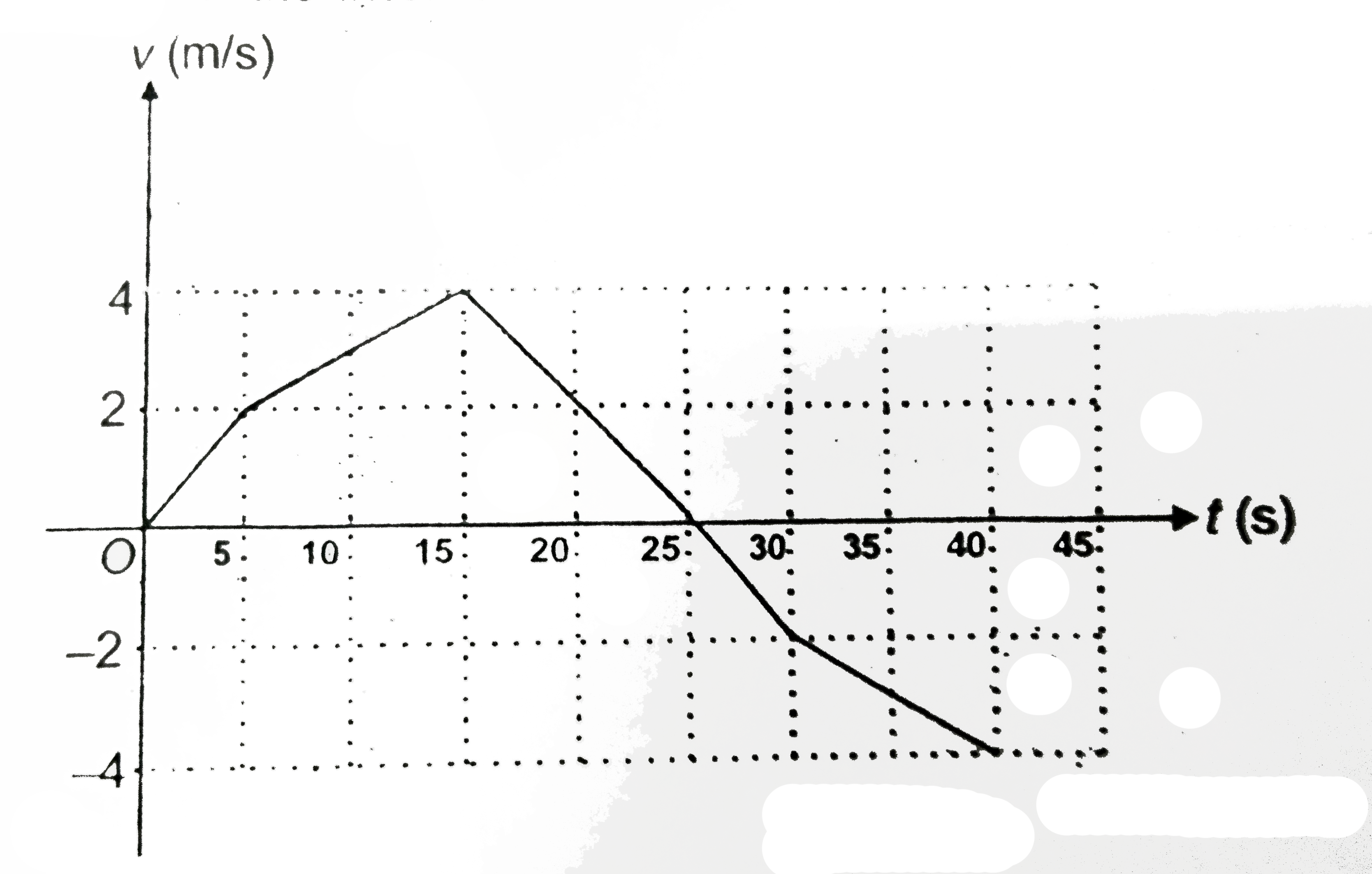
View Solution
